| Download video: mp4 format | webm format |
| Download video: mp4 format | webm format |
| Download video: mp4 format | webm format |

|
“Within a few weeks,” Dave said, “Brandon suggested producing a half-hour special about me following in the wartime footsteps of Michael on a trek that would take us from Kentucky to Atlanta.” That resulted in trips to Shiloh, Resaca and Kennesaw Mountain battlefields, interviews with genealogists and Civil War historians and participation in a battle re-enactment at Camp Wildcat. In addition, Dave began the journey by talking about Michael with family members and local historians in his native Green and Taylor counties. The feature initially aired in 2012 with great viewer response. “Michael was mustered in as an 18-year-old private in December 1861, a rank he maintained through the duration of the war,” Dave explained. “He had his basic training at Camp Hobson near the Green River in Taylor County.” Michael, a resident of Green County, was married and had three sons. In a letter to his aunt and uncle he wrote: Dear Uncle Asberry and Aunt Phebe, I am writing to tell you folks that tomorrow I plan to join the Ky. Volunteers to fight in the War of Secession of which we are now engaged. Pa says a man must do what is in his heart so I am asking you to forgive me in this decision. Sarah (his wife) and Mama cry all the time since my decision to go and fight. Uncle Asberry – I request that should I not return you and Pa take care of Sarah and the children. Tell Aunt Phebe I love her and to pray for my return. Tell little Rueben and little Christopher their cousin is now a soldier. Remember to pray for me as I fight the foe. All my love to you, Michael The 13th Kentucky was formed in 1861 with 861 men. Only 400, including Michael, remained by early 1865 when the war ended. Michael, who had been wounded, also contracted a kidney disease during his service and died in 1872. He was 29, and as Dave discovered, his ancestor likely was the 13th’s last casualty. Michael and his fellow members of the 13th saw their first action in one of the bloodiest battles of the Civil War – Shiloh (April 6-8, 1862). “On the morning of April 7, the regiment was ordered forward and entered into the first battle,” Dave said. “They engaged continuously until 3 p.m., finally pushing back the enemy in a charge so gallant and with such success, President Lincoln nominated commander Col. Edward Henry Hobson for promotion to brigadier general. Many soldiers of the 13th were killed or wounded there. “I stood on hallowed ground at Shiloh, the battlefield that moved me the most,” he continued. “I saw the roster of the boys from the 13th who were killed there and I tried to imagine what the fury of battle must have been like. Then, I remembered the number of casualties – 23,746 – enough to fill up a college football stadium. I couldn’t get my mind around it. “The 13th went on to fight in many battles and skirmishes including, but not limited to: the Siege of Corinth, the Knoxville Campaign and Huff’s Ferry where many were killed or wounded in another ‘brave charge.’ As the war continued, the 13th pushed south into the Atlanta Campaign, fighting at Buzzard Roost and the Battle of Resaca, where Michael was wounded in the arm by an exploding shell. The 13th went on to fight in the Battle of Kennesaw Mountain and the Battle of Jonesboro.” As Dave and the KET crew traced the regiment’s movements, the severity of a soldier’s life became apparent. “I don’t think we can comprehend how tough it was,” Dave acknowledged. “Imagine fighting in battle after battle then marching 500 miles to the next one. Imagine sleeping in what was described by a soldier of the 13th as ‘dog tents’ for an entire winter and nearly running out of rations while being pursued by Gen. (James) Longstreet’s troops. “I don't know if I would even take solace in being wounded on the battlefield instead of being killed. The wounded didn’t fair too well. If you needed your leg amputated, the doctor would just wipe off the bloody knife with a rag after the last fellow he worked on.” Such unsanitary practices and conditions, of course, led to disease, a leading cause of Civil War deaths. Dave decided to fully understand the experience of a Civil War foot soldier he needed to participate in a “battle” himself. He joined the 6th Kentucky Volunteer Infantry Regiment, a Confederate group, that also re-enacts as the Union’s 13th Kentucky. As such, he was given the “unforgettable opportunity to be a re-enactor” with his great-great-grandfather’s unit. “In full uniform with a borrowed Springfield rifle, I learned how to drill after accidentally poking my sergeant in the head with the gun barrel,” Dave laughed. “Then, I marched into the Battle of Wildcat Mountain. “Not only did I get some sense of what my great-great grandfather saw in the battles he fought in, I developed a new respect for re-enactors. They keep history alive and tangible. Without them, I’m afraid our modern-day society would eventually forget much of the Civil War.” But thanks to his great-great-grandson, Michael Shuffett will be remembered.
|
|
TV personality
Dave Shuffett has been a popular television host and producer on both the regional and national levels for 25 years.
From 1989-95, he served as host and producer of the long-running Kentucky Department of Fish and Wildlife television series, “Kentucky Afield.” Shuffett then took his skills to the national level as owner and host of “Outdoors with Dave Shuffett,” airing on broadcast stations and The Outdoor Channel. After three years of crisscrossing America, he returned home in 1999 to become host and segment producer for Kentucky Educational Television's (KET) weekly series, “Kentucky Life.” He is also co-host of the new KET series “Kentucky Collectibles.” Dave is a nine-time Emmy Award nominee for on-camera performance and television producing and, in 2005, was the winner of a national Telly Award. He also is the bi-monthly “Great Outdoors” columnist and photographer for Kentucky Living magazine. Born and raised in south central Kentucky in the small town of Greensburg, he received a bachelor’s degree in communications from Murray State University in 1982. He has two children, Will and Miranda.  More coming? Dave Shuffett may have more Civil War features coming on KET after the success of his 2012 special on his great-great-grandfather. |
Back to top


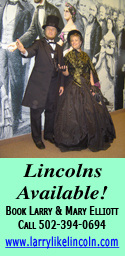

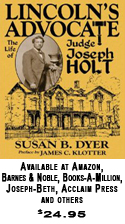
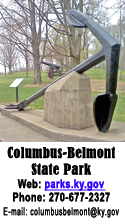



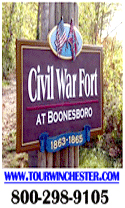


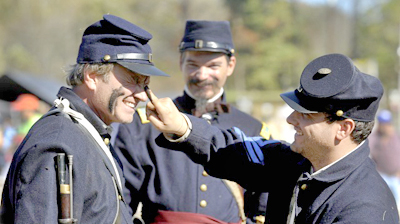
 Family
Family